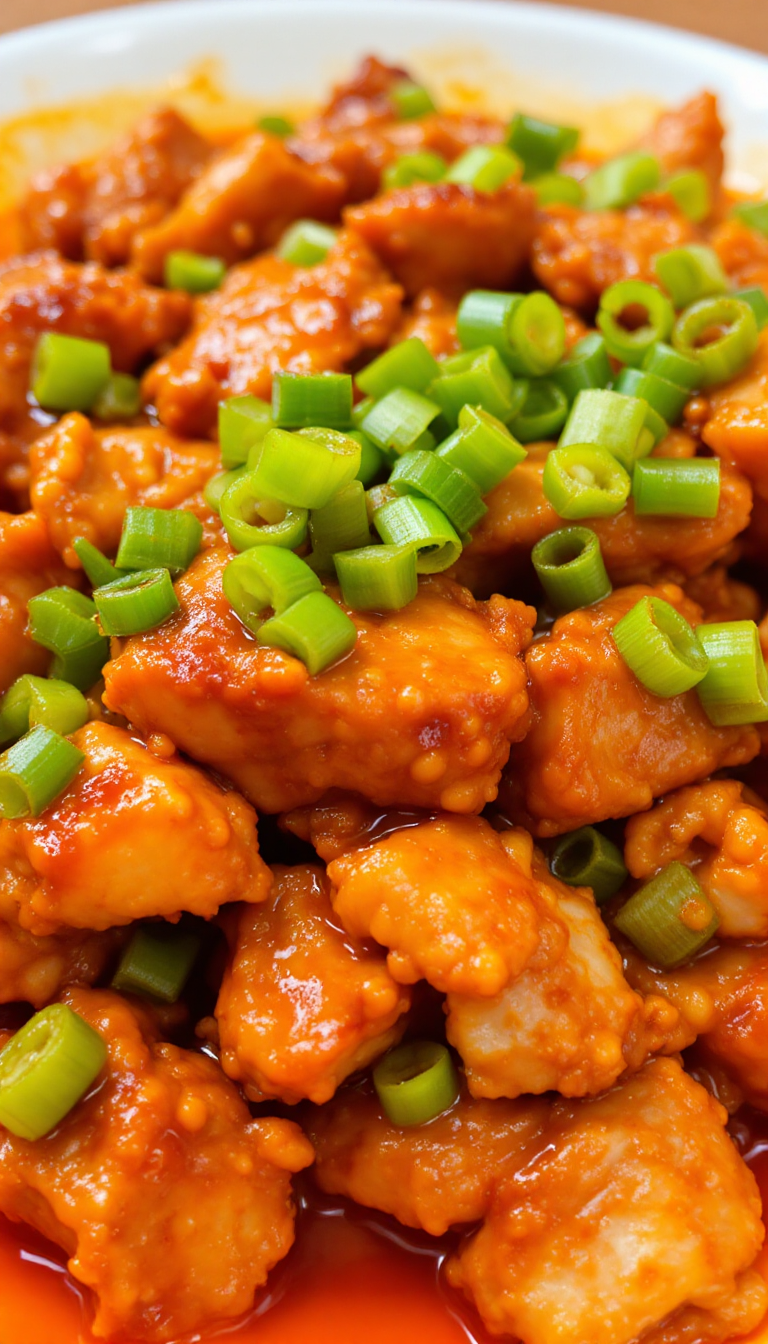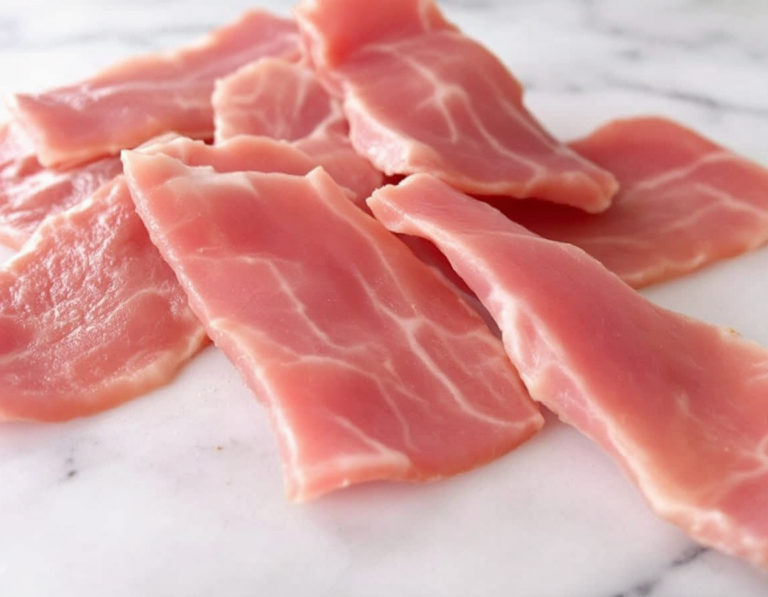
Craving a dish that’s fiery yet comforting? Dwaeji Bulgogi is like a dance of flavors on your tongue—bold, spicy, yet somehow soothing like a warm embrace on a chilly night. I stumbled upon this recipe last winter, and it instantly transformed my kitchen into a sizzling Korean BBQ joint, the kind where the aroma alone makes you feel like you’ve traveled miles.
Steps
- Begin by slicing the pork belly into thin pieces, approximately ½ inch by 2 inches and about ? inch thick. If preferred, substitute pork belly with pork shoulder or loin.
- Prepare the marinade by combining crushed Korean pear, onion purée, minced garlic, minced ginger, and chopped green onion in a bowl.
- Add soy sauce, sugar, rice syrup (or brown sugar), a pinch of ground black pepper, toasted sesame oil, and hot pepper paste to the mixture.
- Thoroughly mix the ingredients to ensure the pork is evenly coated with the marinade. Allow the pork to marinate for at least 30 minutes to enhance flavor.
- Grill, pan-fry, or barbecue the marinated pork over charcoals until it is cooked through and has a slightly charred exterior, ensuring it is evenly cooked on all sides.
- Serve the spicy pork bulgogi hot, optionally with side dishes such as grilled vegetables or rice, and enjoy the bold, savory flavors.

Ingredients
- 1 pound pork belly, sliced thinly into pieces ½ inch x 2 inches and ? inch thick (can substitute with pork shoulder or pork loin)
- ½ cup crushed Korean pear (Asian pear)
- ¼ cup onion purée
- 4 cloves minced garlic
- ½ teaspoon minced ginger
- 1 chopped green onion
- 1 tablespoon soy sauce
- 1 tablespoon sugar
- 1½ tablespoons rice syrup (or substitute with 2 tablespoons brown sugar)
- A pinch of ground black pepper
- 2 teaspoons toasted sesame oil
- 3 tablespoons hot pepper paste
FAQ
- What is the main difference between dwaeji bulgogi and stir-fried pork (dwaejigogi-bokkeum)?
- The primary distinction lies in the preparation method. Dwaeji bulgogi is marinated and then grilled, pan-fried, or barbecued, whereas stir-fried pork is cooked in a pan or wok with the seasoning sauce and vegetables over high heat.
- Can the dwaeji bulgogi marinade be used for vegetarian dishes?
- Yes, the marinade can be adapted for vegetarian versions by using vegetables such as eggplant, squash, or mushrooms, which are popular alternatives.
- What cut of pork is recommended for dwaeji bulgogi?
- Thinly sliced pork belly is recommended, but pork shoulder or pork loin can also be used as substitutes.
- How does the spicy pork bulgogi differ from beef bulgogi?
- The main difference is the addition of hot pepper paste in the marinade for pork bulgogi, which gives it a spicy flavor not found in the beef version.
- Is there a way to make this dish less spicy?
- To reduce the spiciness, you can adjust the amount of hot pepper paste in the marinade or substitute it with a milder pepper paste.
Tips
- Choose the Right Cut of Pork: While pork belly is recommended for its rich flavor, you can also use pork shoulder or pork loin for a leaner option. Adjust cooking time accordingly to ensure tenderness.
- Experiment with Marinade on Vegetables: For a vegetarian twist, apply the marinade to vegetables like eggplant, squash, or mushrooms. This not only adds variety but also caters to vegetarian guests.
- Ensure Proper Marination: Marinating the pork thoroughly is key to infusing flavors. Allow the pork to marinate for at least a few hours or overnight in the refrigerator for the best results.
- Use Korean Pear for Authenticity: Incorporating crushed Korean pear in the marinade helps to tenderize the meat while adding a subtle sweetness, which is a hallmark of authentic Korean BBQ flavor.
Equipment
- Korean BBQ Grill Pan – If you plan to cook indoors, a specialized grill pan designed for Korean BBQ can be useful.
- Charcoal Grill – For authentic outdoor BBQ flavor, a charcoal grill is ideal.
- Food Processor or Blender – Useful for puréeing the onion and crushing the Korean pear.
- Meat Slicer – To achieve the thin slices of pork belly if you don’t have good knife skills or a sharp enough knife.